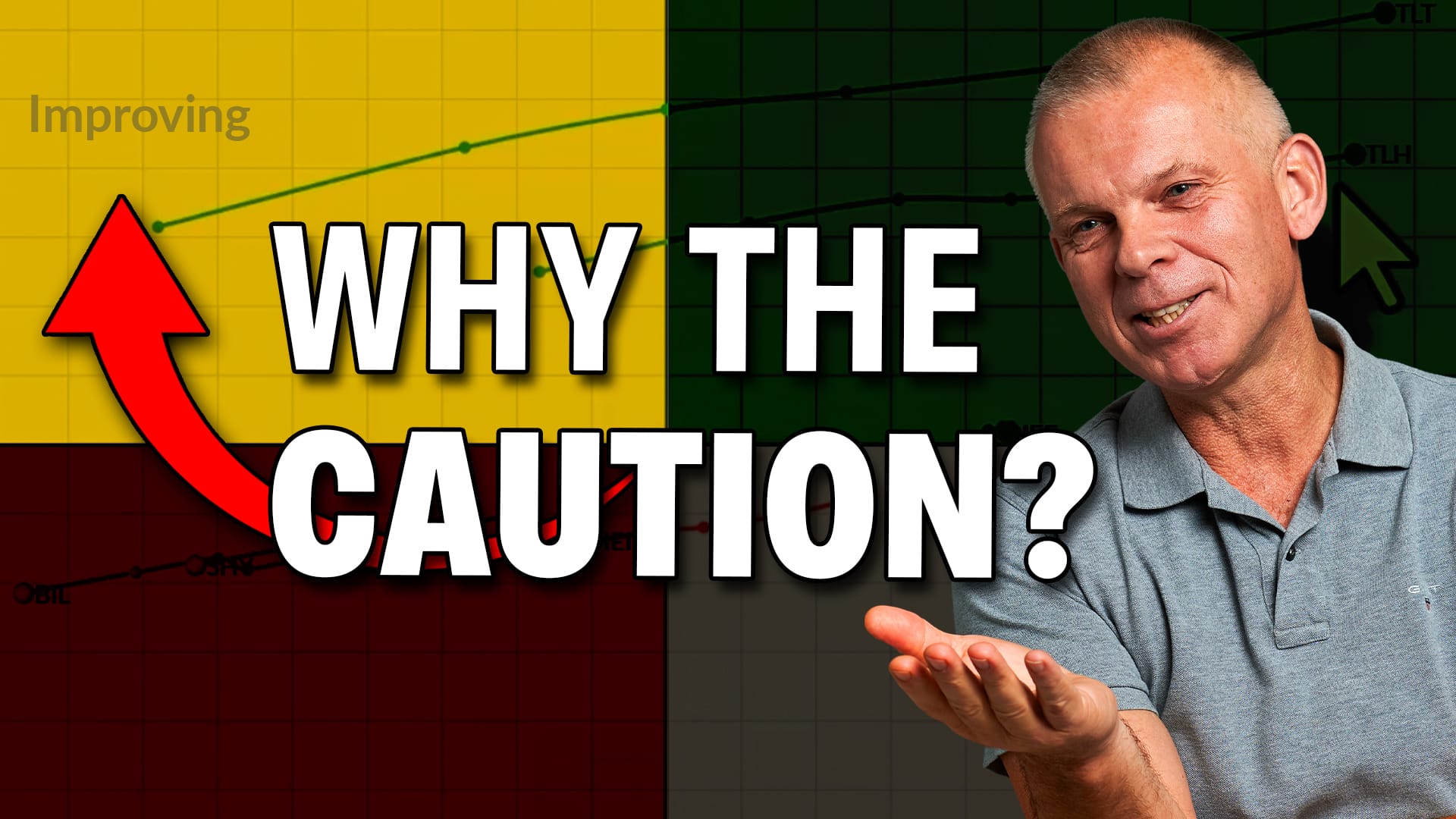Deteriorating Confidence Is Not Good For Stocks And Commodities But Is For Bonds
- Flight to Safety Leaves Stocks Behind
- S&P vs. Gold is Another Measure of Confidence That’s Deteriorating
- High-Quality Bonds Like Deteriorating Confidence
- A Rising Gold/Commodity Ratio is Actually Bearish for Commodities
Flight to Safety Leaves Stocks Behind
Last week, I wrote that it was nail-biting time for US equities, as the S&P Composite and the World Stock ETF were threatening to complete an important intermediate head-and-shoulders top. This week, those breakdowns appear to be materializing, as shown in Charts 1 and 2. They're not happening in isolation, though, as many intermarket measurements of confidence have already broken down. These relationships, which often lead equity prices themselves, reflect what investors actually do (as opposed to what they say or feel) and it looks like they are headed for the exits.

Chart 1

Chart 2
Chart 3, for example, compares the price of the iBoxx High Yield ETF (HYG) to that of the iShares 7-10-year Trust (IEF). When this relationship is in a rising mode, it tells us that bond traders have confidence in the economy and are relatively unconcerned about defaults. Under such circumstances, these traders go for yield over the safety of the IEF. Swings in this relationship often move in sympathy with similar movements in the S&P. However, on some occasions, the ratio leads. We saw that at the marginal new all-time high in the S&P in April compared to the much lower peak in the ratio. In the last week, this relationship has begun to accelerate on the downside, even moreso than the S&P. Also worrying is the fact that the Special K (SPK), which you can read about here, has just edged out a new 2019 low for the move. I have a saying related to that: where the SPK goes, prices will soon follow.

Chart 3
When we substitute the IEF for the iShares 20-year Trust, the TLT, you can see that the situation looks even worse, as this ratio has essentially returned to its 2019 low and the SPK has registered a post-2018 low at the completion of its top formation.

Chart 4
This lost confidence is not limited to the US; it is being transmitted worldwide. In this respect, Chart 5 compares the Dow Jones Global Index to a ratio between the iShares International High Yield Bond and the Barclays International Treasury Bond ETFs ( _HYXU/_BWX). Note that both the Index and the ratio have broken down. Moreover, momentum for the latter is negative from both a short- and long-term point of view.

Chart 5
S&P vs. Gold is Another Measure of Confidence That’s Deteriorating
A rush to safety often involves purchasing gold. The green-shaded areas in Chart 6 indicate when the trend of the stock/gold ratio in the lower window is positive (i.e. favoring stocks). This also proved positive for stocks in their own right. The unshaded areas, when gold was outperforming stocks, were not all bearish; however, if the market did prove to be vulnerable to a decline, those areas represented the kind of environment in which those declines developed. The relationship is currently in a declining to range-bound mode and is vulnerable to a 2011-2019 trend line violation. That has not happened yet, nor has the trend line for the Index been penetrated.

Chart 6
However, Chart 7 shows the relationship to be edging through the neckline of a potential head-and-shoulders top. It is likely to turn into a more decisive break, as the KST is in a declining mode.

Chart 7
A Rising Gold/Commodity Ratio is Actually Bearish for Commodities
We often think of rising gold prices as discounting higher commodities and inflation in general, but the reality is a little different. For example, Chart 8 shows that, when gold is rising relative to commodities, it is actually bearish for commodities, as traders flock to gold as a safe haven. Gold has already started to outperform commodities, but the point I am watching for is a break above the dashed green downtrend line, because, if that is bettered on the upside, I would expect to see commodities take an additional fall.

Chart 8
High-Quality Bonds Like Deteriorating Confidence
Chart 9 reverses the ratio, with government bonds in the form of the TLT compared to high-yield instruments in the form of the HYG. Since the ratio’s components have been switched, it is a rising indicator that reflects deteriorating confidence and vice versa. Swings in this unadjusted relationship clearly move in sympathy with bond prices themselves. Recently, both series violated multi-year trend lines, a development which suggests that both are likely to move higher.

Chart 9
Good luck and good charting,
Martin J. Pring
The views expressed in this article are those of the author and do not necessarily reflect the position or opinion of Pring Turner Capital Group of Walnut Creek or its affiliates.








